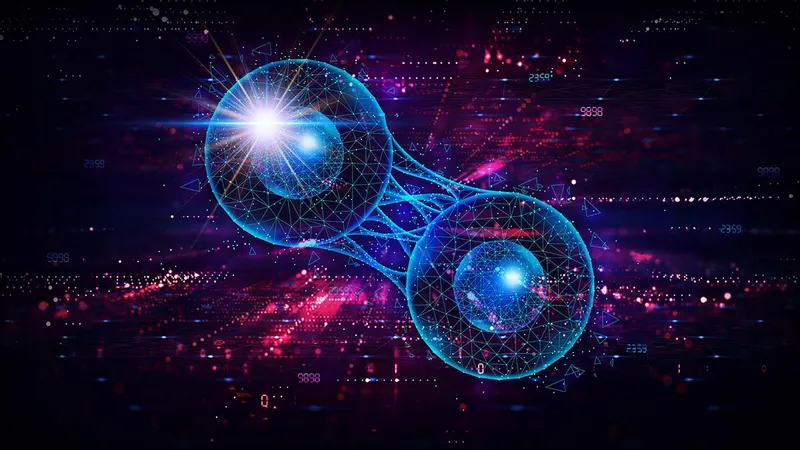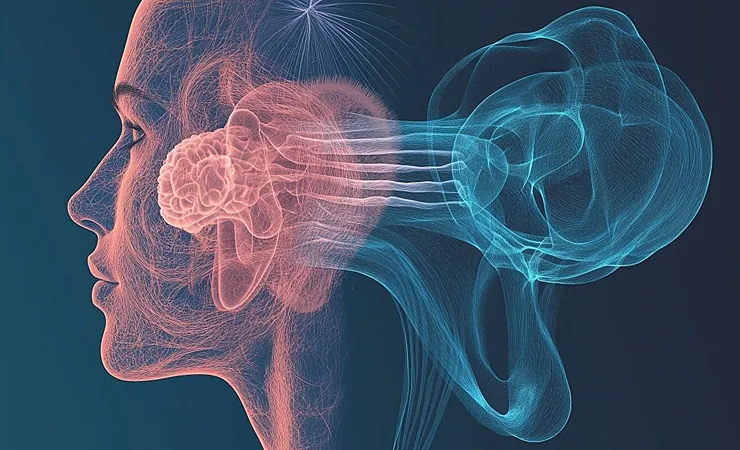
Groundbreaking Research Challenges Popular Theories on Cell Reprogramming
2024-11-01
Author: Nur
Groundbreaking Research Challenges Popular Theories on Cell Reprogramming
Recent breakthroughs in stem cell research have cast a shadow on the widely accepted theories surrounding direct cellular reprogramming, a fascinating yet perplexing process where a mature cell of one type can be transformed into a mature cell of another, bypassing earlier developmental states. While this mechanism holds promise for regenerative medicine, its notorious inefficiency has long puzzled scientists.
Traditionally, many researchers believed that all cells possess equal capabilities for reprogramming, restricted by probabilistic factors that dictate success rates. However, an emerging faction advocates an "elite" model, suggesting that only a distinct subset of cells is primed for efficient reprogramming. This latter viewpoint has gained traction following findings from Dr. Derek van der Kooy’s laboratory at the University of Toronto.
A new study spearheaded by van der Kooy and his team, recently published in *Stem Cell Reports*, provides compelling support for the elite model. Their research unveiled that neural crest stem cells, located in the skin and other tissues, serve as the primary source for reprogrammed neurons. In this groundbreaking study titled “Neural crest precursors from the skin are the primary source of directly reprogrammed neurons,” the scientists underscored the role of these specialized cells in the reprogramming process, revealing a particular focus on murine fibroblasts converting into neurons.
The authors of the study noted, “We find that nearly all reprogrammed neurons are derived from the neural crest lineage.” They highlighted a significant drop in reprogrammed neurons when these rare proliferating neural crest precursors are selectively eliminated, affirming their pivotal role in cellular transformation.
This new perspective challenges the long-held notion that cells from disparate embryonic layers could undergo fate conversion through transcription factor infusion. Justin Belair-Hickey, a graduate student and the first author of the study, emphasized that their findings illuminate the unexpected inefficiency in reprogramming, positing that neural crest stem cells are among the few capable of yielding the desired cell types.
Neural crest cells, already recognized for their diverse developmental potential, are particularly noteworthy due to their embryonic origin from the ectodermal germ layer, the same layer that gives rise to neurons. This convergence raises tantalizing questions about the evolutionary paths of these versatile cells and their implications for future research.
The van der Kooy team’s inquiry was driven by their observations of conflicting interpretations regarding cellular identity flexibility. Many assumptions suggested that mature cells from one embryonic layer could easily be reprogrammed into cells from another distinct layer. However, their hypothesis posited that reprogramming is feasible primarily between cells originating from the same germ layer.
“I believe many claims regarding direct reprogramming have been overstated or misinterpreted,” said Belair-Hickey. “Our findings suggest that cellular identity is much more rigid and less variable than previously thought. What we have discovered are not merely skin cells that can be turned into neurons; instead, we have identified stem cells in the skin that share a lineage with brain cells.”
Excitingly, neural crest stem cells are distributed throughout the body, appearing in areas including skin, bone, and connective tissue. This widespread location, combined with their ability to differentiate into various cell types, positions them as promising candidates for stem cell therapies aimed at treating a multitude of diseases.
Dr. van der Kooy remarked on the potential the study unlocks, stating, “These unique stem cells may have gone unnoticed by many because they are rare despite their abundance throughout the body. They could easily be confused for mature cells in different tissues, but what we’ve found is a unique population of stem cells that could redefine our understanding of cellular plasticity and reprogramming.”
As this research continues to unfold, the implications of these findings could revolutionize our approaches to regenerative medicine and the treatment of neurological disorders. With neural crest stem cells leading the charge, new avenues for therapy and understanding of cell biology are indeed on the horizon. Keep your eyes peeled—this could change everything we thought we knew about cellular identities!



 Brasil (PT)
Brasil (PT)
 Canada (EN)
Canada (EN)
 Chile (ES)
Chile (ES)
 España (ES)
España (ES)
 France (FR)
France (FR)
 Hong Kong (EN)
Hong Kong (EN)
 Italia (IT)
Italia (IT)
 日本 (JA)
日本 (JA)
 Magyarország (HU)
Magyarország (HU)
 Norge (NO)
Norge (NO)
 Polska (PL)
Polska (PL)
 Schweiz (DE)
Schweiz (DE)
 Singapore (EN)
Singapore (EN)
 Sverige (SV)
Sverige (SV)
 Suomi (FI)
Suomi (FI)
 Türkiye (TR)
Türkiye (TR)